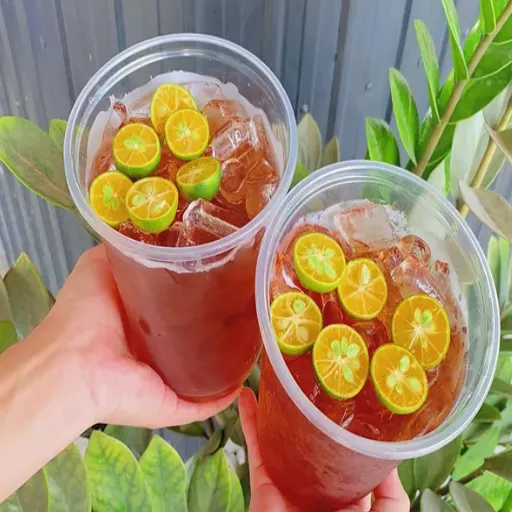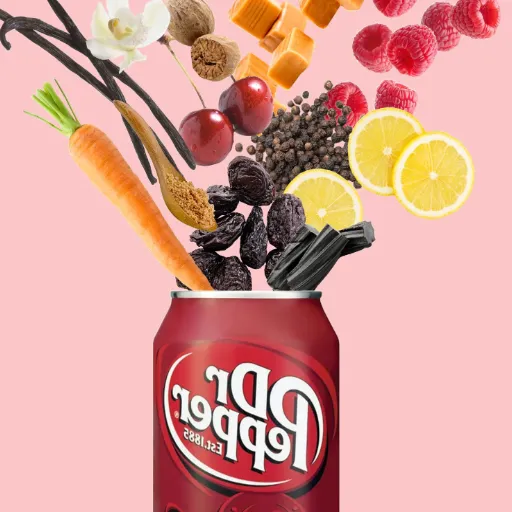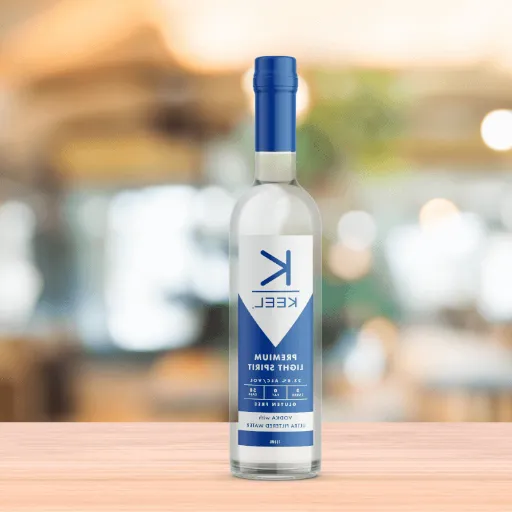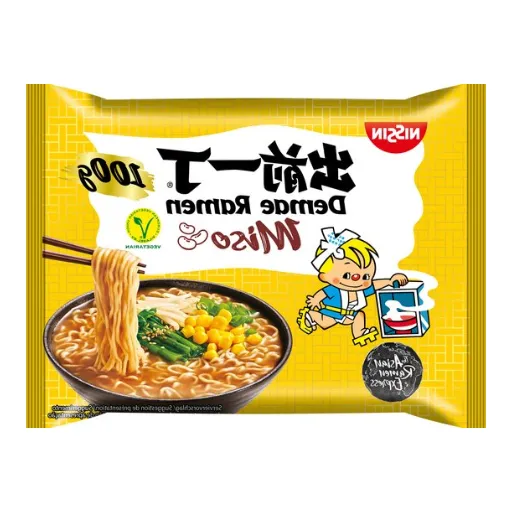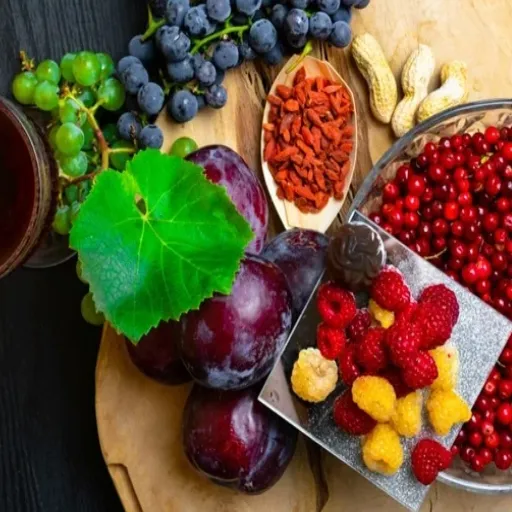The beverages of Vietnam are an enchanting journey through history, culture, and modernity, giving a sensory experience that is the very heartbeat and spirit of the nation. The traditional tea-making processes with their pleasing aroma and the bustling coffee shops dancing with the flavor of condensed milk are just two examples of how each beverage conveys the country’s past and gastronomic progress. The article guides you through a tasty adventure among the most famous drinks of Vietnam, revealing the special ingredients, methods, and cultural importance of each sip. If you are a frequent traveler or a gourmet lover, then get ready for the slow but sure discovery of the vast and fascinating Vietnamese drinks that still surprise and win over the world’s taste buds.
Traditional Vietnamese Drinks
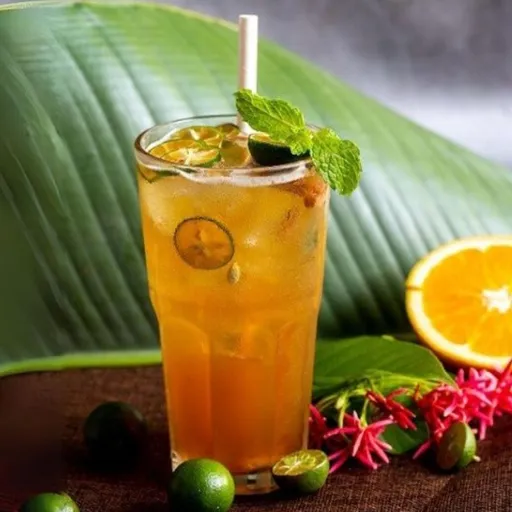
Vietnamese Coffee: A Cultural Icon
Vietnamese coffee is famous for its strong and rich flavors, which are made possible by a special preparation technique and different brewing methods. The coffee in Vietnam is mainly comprised of robusta beans, which are more potent and bitter than arabica beans. The roasting process often used for these beans includes butter or sugar, giving rise to a very dark and sweet taste, which is one of the reasons why coffee from Vietnam is different from other kinds of coffee around the world.
The unique method of brewing using a phin filter is a characteristic feature of the Vietnamese coffee culture, and it is a small metal drip filter that enables hot water to flow through the coffee grounds very slowly. This method produces a very concentrated and fragrant brew which is mostly taken black (cà phê đen) or sweetened with condensed milk (cà phê sữa). The use of condensed milk, which was influenced by the French colonial period and the lack of fresh milk, has become one of the features that define Vietnamese coffee, for it not only adds sweetness but also creaminess to soften the strong coffee flavors.
Vietnamese coffee is more than just a drink; it is a cultural symbol with a deep-rooted significance. The Vietnamese people usually hang out at coffee shops or street vendors and the places serve as public areas where the people come to socialize and even take a breath. The Vietnamese way of having coffee is not just a matter of obtaining caffeine, but it is rather an aspect of the old ways of life, hospitality, and a slower pace of life that accompanies drinking coffee, thus making it a wonderful cultural symbol of the country’s rich history and gastronomic heritage.
Rice Wine: History and Brewing Techniques
Rice wine, an ancient alcoholic drink, has been an indispensable part of very many Asian cultures for a long time. Its history is quite fascinating, as it is thought to have been produced in China as early as 5000 BC. Rice wine was at first solely used for ceremonies and other religious purposes, but later it became an important part of the daily lives of people, representing different things such as celebration, togetherness, and customs. Other Asian countries like Japan, Korea, and Vietnam have their own distinctive rice wine types, which depend on local ingredients and cultural influences. Each one has been developed according to the specific needs and tastes of the people in that region.
The method used to produce rice wine is both complicated and precise involving main ingredients such as glutinous rice, water, and a fermentation starter which might be yeast or mold. Steaming is the first step and after that, the rice is cooled down resulting in the best condition for fermentation. During this step the starter is added which converts the starch in the rice to fermentable sugars. The whole process takes weeks or even months and finally, the liquid is filtered and matured, if necessary, to get the desired aroma and taste. The alcohol content in rice wine can vary a lot ranging from about 10 to 20 percent, the final product can be either clear or cloudy but the taste is always a combination of sweetness and acidity, different regions produce it with different alcohol content.
Rice wine is significant not only as an ingredient but also as a means for people to socialize and for their cultures to thrive. The Indian sake, Korean makgeolli, and Vietnamese rượu nếp rice wines are examples of the Asian continent’s wide variety of rice wine heritage. The cutting-edge brewing methods of today have provided the opportunity for the production of more uniform and better quality alcohol while still holding the traditional way of making it, thus ensuring that rice wine stays a timeless symbol of community and craftsmanship. Its continuous popularity indicates not just a beverage but also an artifact linking the past and the present which is a huge part of the culture.
Bia Hoi: The Fresh Beer of Vietnam
Bia hoi, commonly known as “fresh beer,” is the iconic beverage of Vietnam with its very light, very crispy freshwater taste and very specific producing procedure. Bia hoi is brewed every single day, unpasteurized, and the flavoring is just like the smoking is a beer to be drunk within a day after making. It has such a low alcohol content, which is usually around 3-4%, that it becomes a very light drink for the whole range of people in different tastes, and this in turn brings about more socializing in the areas where the even crowded and competing-bia hoi establishments are located.
Bia hoi’s social importance is mainly due to its cheapness and the fact that it creates a social mixing situation. Despite selling at a price close to unbottled or canned often inferior quality beer, bia hoi gets served mainly in roadside eating places, street corners, and small family-run joints. These places, also referred to as “bia hoi joints,” typically have small plastic chairs and a friendly atmosphere. Here, the locals come together to tell stories, eat simple food, and unwind after work, showcasing the community spirit that is at the heart of Vietnamese culture.
Bia hoi’s miraculous quality lies in its superfreshnes and the bespoken production scale. It is made and vendored in the very spot guaranteeing the least time from the making to the drinking. This community-centered production line slashes prices and is the other reason besides the taste that the beer is still so popular among the people. It is a unique experience to drink this beer, as it has the smell and taste of the very environment that it is coming from, making bia hoi not just a drink but also an experience deeply interwoven with Vietnam’s culture and lifestyle.
Modern Trends in Vietnamese Beverages
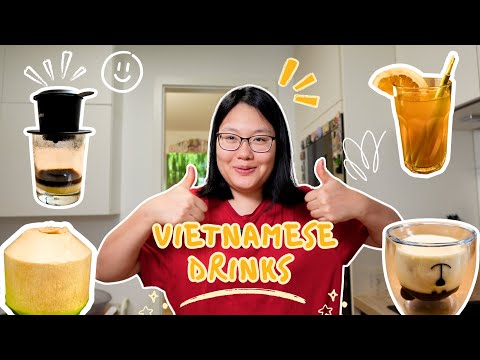
Craft Beer: The Rise of Local Breweries
Over the last ten years, the Vietnam beer craft case has been bounced very high due to people’s love for the variety of flavors and the quality of the brewing process. Ho Chi Minh City, Hanoi, and Da Nang are the major cities where new local brews are making every city and every single one of them coming up with new styles and fresh inventions for the beer scene. The use of local ingredients, for example, tropical fruits, spices, and herbs, is the most common practice among these breweries to produce their unique flavor profiles that not only signal Vietnam’s culinary heritage but also its rich culinary heritage.
The growing demand for craft beer and the increasing number of microbreweries have been documented statistically, and the results show that Vietnam’s craft beer market is growing faster than the world’s average. The young and urban consumers have also been one of the influential factors as the young generation frequently buys premium goods that not only meet their desire for quality but also for artistic and experience-related aspects.
Moreover, local breweries working with foreign experts have not only improved their brewing methods but also have unified the traditional with the modern. This not only helps local enterprises but also establishes Vietnam as a new competitor in the world of craft beer.
Sinh Tố: The Popular Vietnamese Smoothie
Sinh tố, a drink that is very much appreciated in Vietnam, is an important part of the country’s food culture and its commitment to using fresh and natural ingredients. Vietnam’s tropical fruits, such as mangoes, bananas, dragon fruit, avocados, and others, are usually the main ingredients of these smoothies. Depending on the local climate and season, these fruits can be condensed or made into milk or yogurt, resulting in a creamy, flavorful beverage that is rich both in taste and health benefits due to the availability of high-quality produce locally sourced.
In terms of food value, sinh tố presents a typography comprising vitamins, minerals, and healthy fats, the latter depending on the type of fruits and bases selected. The use of smoothies has become widespread in urban Vietnam’s areas and has coincided with the global trend towards healthier lifestyles. Smoothie stalls and cafes have become common, offering not only traditional smoothies but also modern ones with superfoods like chia seeds or protein powder for the health-conscious.
The economic importance of sinh tố is very high because its uncomplicated nature makes it possible for small entrepreneurs to run smoothie stalls with low investment capital. This creates a new demand for fresh produce and so concurs with the growth of local economies which also demonstrates Vietnam’s agricultural diversity. Besides, sinh tố has captured the attention of the international markets for its unique taste and healthy image, thus cementing its status as a representative of Vietnam’s gastronomic variety.
Egg Coffee: A Unique Twist on Tradition
Egg coffee or “cà phê trứng” is a well-known Vietnamese invention that beautifully showcases the country’s creative and innovative way in dealing with coffee culture. The drink, first created in Hanoi in the 1940s, was the result of a milk crisis and thus the ingenious idea of using egg yolks as a milk substitute. The outcome was a mixture of egg yolks, sugar, condensed milk, and strong Vietnamese coffee that was rich and silky smooth.
Making egg coffee consists of first whipping up the egg yolks and sugar into a creamy froth till the mixture is light and fluffy like a mousse. Then this is put on top of a strong Vietnamese coffee, which is usually made with a phin filter that brings out the bold and fragrant qualities. The coffee’s heat gently cooks the egg mixture, resulting in a delightful combination of flavors and textures that harmoniously counterpoise the bitter taste of coffee with the sweet taste of cream.
Presently, egg coffee has earned the title of being one of the most innovative items in Vietnam’s food and drink industry; thus it has become a very popular drink among the locals as well as tourists. It is made in different ways such as iced coffee for the hot seasons. As the world becomes more interested in the unique coffee cultures, the demand for egg coffee has risen much higher than the little spot where it started, thus it has been confirmed as a unique and inseparable part of Vietnamese culture and creativity as a symbol.
Refreshing Drinks for Hot Days
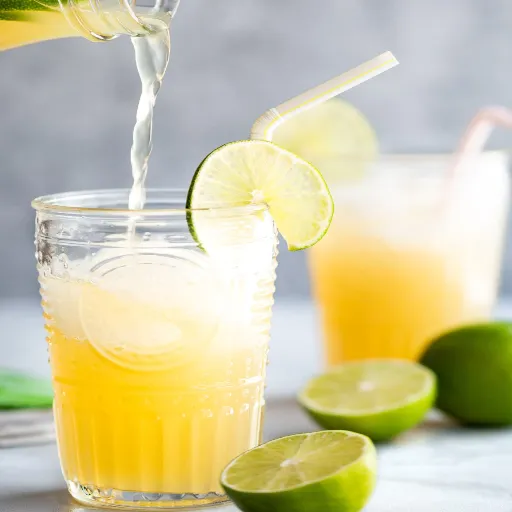
Sugarcane Juice: A Sweet Refreshment
Juice of sugarcane is a drink which is sweet and naturally hydrating made by pressing peeled sugarcane stalks for the nutrient-rich liquid. It has an earthy sweetness and a crisp flavor, and it is mainly consumed in the tropical and sub-tropical areas that are good for sugarcane cultivation. Sugarcane juice consumed very cold and delicious is an excellent choice for quenching thirst and keeping the body in balance during hot weather because it is packed with the most important electrolytes like potassium and magnesium.
Sugarcane juice from a nutritional perspective provides a natural energy source due to its unrefined sucrose and vitamins like vitamin C and B-complex in very small amounts. It is also full of antioxidants such as flavonoids and phenolic compounds which are responsible for one of the major health benefits of this juice such as digestive aid, liver function enhancement and immunity boost. Interestingly, it is usually drunk fresh because the sugars in it might ferment very fast and thus the flavor might get altered if there is improper storage or processing.
Sugarcane juice is becoming more and more popular in the urban areas worldwide nowadays. It is often served cold with a little lime or ginger for flavor complexity. This simple but refreshing drink is slowly becoming a more processed sugary beverage equal as it is becoming a healthier category thanks to consumer demand for natural and wholesome refreshment options.
Coconut Water: Nature’s Hydration
Coconut water is the clear, slightly sweet liquid that comes from young green coconuts is a beverage that people all over the world love for its very good hydrating properties as well as its great nutritional value. This natural drink is loaded with the vital electrolytes like potassium, magnesium, sodium, and calcium in particular that are indispensable for fluid balance in the body, muscle contraction, and nerve function. A 240 mL serving of coconut water usually contains around 600 mg of potassium, this makes it one of the natural drinks with the largest number of electrolytes. Its properties make it a powerful rehydration drink whether it is taken after heavy exercise, during recovery from medical conditions, or just to keep up with daily fluids.
In addition to its ability to hydrate, coconut water has very few calories and sugars compared to most sports drinks and sodas, thus, being a preferred drink for health conscious buyers. Its natural potassium content which causes the regulating of blood pressure levels, has been brought to light by research as a main factor for the heart health benefits of drinking coconut water. Additionally, coconut water has antioxidant properties and fights off the effects of free radicals thus giving the body more strength. Besides the natural flavors, coconut water doesn’t contain anything like i.e. preservatives or sweeteners, and, therefore, is a true and complete hydration source that meets the desires of today’s consumers who want nothing less than absolute transparency in food and beverage choices.
Drinking is not the only way coconut water is used, it is also very versatile. It is becoming more and more common to use it as an ingredient not only in smoothies and wellness drinks but also in culinary dishes. Its gentle taste goes well with many recipes and mixes fruits, vegetables, and herbs without being noticed. At the same time, packaging innovations have made it possible for coconut water to be available all over the world, thus, having no problem retaining its flavor and nutritional value during transport. The trend towards supporting plant-based and minimally processed products has also been a significant factor in pushing coconut water’s rise in popularity in the functional drink segment, solidifying its place among the essentials of health and wellness.
Iced Vietnamese Teas: A Cooling Delight
Vietnam has a colorful food culture where iced Vietnamese teas rank high, mainly because they cool off those who are living in or visiting the country with its hot and humid climate. These teas are made with high precision and are often referred to as bold and sweet with the aromatic notes in the background. Iced lotus tea, iced jasmine tea, and “Tra Chanh,” i.e., iced tea with lime, the most popular and widely known, are the three main varieties. Each tea type is steeped in history and made with unique and aromatic ingredients from dried lotus petals or fragrant jasmine flowers full of sensory qualities. Today, these teas are not only the inhabitants’ primary drink but also enjoyed by them in tea houses and cafes at the street-side during the day life representing the leisurely and communal lifestyle prevailing in the area.
The regions of iced Vietnamese teas have different ways when it comes to preparing and serving the drinks but they are always consistency simplicity and taste enhancement methods. The unpolluted top-quality tea leaves are the basis of all and do come from the wild mountains such as Lam Dong and Thai Nguyen. In the case of iced teas, the brewing process is crucial; the loose-leaf tea is fine-steeped at the right temperature in order to get the maximum flavor extraction while at the same time controlling bitterness to practically zero. After that, the tea undergoes cooling and is mixed with ice, oftentimes sweeteners such as sugar or syrup and fresh lime or herbal infusions are added to suit the different tastes and preferences. The ice also does the same thing that it has done with tea by not only making it a cooling drink but also changing its flavor subtly leading to the creation of a harmonious blend between strength and refreshment.
These teas, from a medicinal point of view, are a source of multiple benefits. Iced Vietnamese teas, mainly from green tea containing catechins or black tea polyphenols, are known for their antioxidant property which protects the body from oxidative stress and supports the heart. The herbs or citrus fruits, which are used in making the drink, not only impart the drink’s taste but also the drink’s vitamins content, particularly Vitamin C, and at the same time assist in digestion and hydration. The world is gradually moving towards healthier drinks, and the Vietnamese iced teas have been recognized as naturally flavored low-calorie options available for all kinds of diets. Their origin stories and health claims along with their acceptance by modern consumers are the main reasons that traditional drinks are becoming increasingly popular worldwide.
Cultural Significance of Beverages in Vietnam
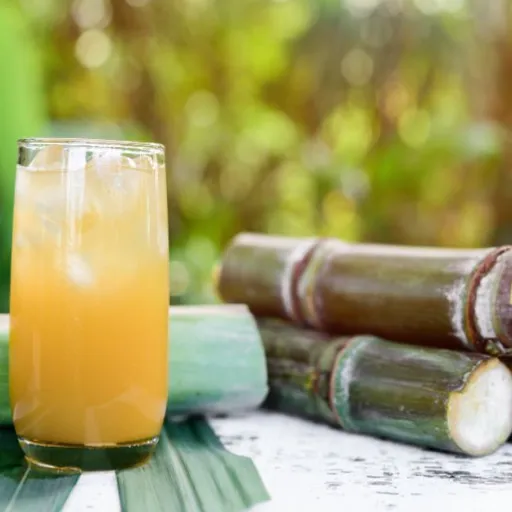
Drink Culture: Social Aspects of Vietnamese Beverages
Beverages are very important to the Vietnamese people; they are the ones that influence the social life, the celebrations, and the rituals. Tea, more than any other drink, symbolizes hospitality and respect all over Vietnam; it is often offered to the visitors as a sign of welcome or is given during ceremonial occasions like marriage and ancestor worship. The making and giving of tea are done with such care and on purpose, thus stressing the respect for others and building up a feeling of community. Coffee, which became popular together with French colonization, is another major aspect of daily social life. Vietnamese coffee culture is vibrant not only in urban but also in rural areas where people come together in coffee shops to share ideas, conduct business, or enjoy casual conversation in their favorite place.
Besides tea and coffee, drinks like rice wine (rượu) and sugarcane juice portray different social customs in Vietnam. Rice wine is the main drink of the community and of the celebration from family gatherings to traditional festivals. It is customary for the participants to drink rice wine together as a sign of oneness and closeness. Sugarcane juice, which is a cool and inexpensive drink, is everywhere in the Vietnamese street food culture, it represents the liveliness and the simplicity of life in everyday situations. People use these drinks not only for the practicalities but also in building relations by sharing experiences.
The changing drinking habits in Vietnam is also a reflection of the fast-paced social and economic developments in the country. The breakneck speed of modern lifestyles is pushing the younger generation of Vietnamese not only to drink the global beverage trends but also to create their own (e.g., the famous fruit-infused teas or specialty coffee drinks). The trend shows the dynamic interplay between cultural heritage and contemporary tastes, thus ensuring that Vietnamese drinks will continue to be a rich, complex, and multifaceted part of the nation’s identity while also adapting to the changing demands of a global community that is getting increasingly interconnected.
Alcoholic Beverages in Vietnamese Celebrations
Vietnamese alcoholic beverages are profoundly involved in the everyday life of the Vietnamese people and their celebrations and ceremonies in particular. The traditional drinks “rượu đế,” a strong rice wine that is often made at home in rural areas, and “rượu cần,” a rice wine that is fermented and consumed in a group through bamboo straws, embody the cultural aspect of family roots and hospitality. Sharing of these drinks is done during Tết (Vietnamese Lunar New Year) and weddings as symbols of peace and prosperity.
Besides the aforementioned traditional drinks, more and more people are becoming inclined toward modern alcoholic drinks such as beers and imported wines. Moreover, the country has built an emerging beer culture which made it ranking among the top beer consumers in Southeast Asia. The domestic top brands like Bia Saigon and Hanoi Beer have long been staples at the occasions and parties integrating the luxury of modern tastes along with the old-fashioned ones. Recently, shifts in the consumption patterns have also led to the popularity of craft beer as more and more local breweries experiment with the use of native ingredients, like lemongrass and tropical fruits, which displays innovation within the market.
The duality of traditional and modern beverages of alcohol represents the diversity of Vietnam’s cultural heritage and its connection with modern trends. Their presence in the parties is not only limited to providing refreshment but also to being the main source of cultural expression connecting the past and the present and making the past coexist with globalization.
Herbal Drinks: Health Benefits and Traditions
Herbal drinks have been cultural traditions for a long time because of their perceived health benefits and natural origins. They have been regarded as therapeutic, providing help for a large range of diseases including digestive disorders, stress, and more. The most common example is chamomile tea, which is used for its calming effects. Furthermore, ginger-based beverages are believed to be helpful for digestion and inflammation.
The same view is held by science where herbal drinks are said to possess bioactive compounds such as antioxidants, polyphenols, and essential oils which indeed lessen the oxidative stress and improve overall health over the years. An instance of this is the case of peppermint tea which is known to possess menthol that has a respiratory comforting effect and on the other hand, hibiscus tea’s association with blood pressure reduction in certain studies. The mentioned health benefits are a reflection of the rising consumer interest in natural cures and wellness-oriented lifestyles.
At the same time, the making and drinking of herbal beverages often carry out the social or even ceremonial aspects and thus expressing the core of the tradition of the different cultures. People in different parts of the world observe rituals of herbal infusions that underscore their significance in building up social ties and maintaining the heritage. This is like giving the elders a chance to pass their experience and knowledge about nutrition and wellness to the modern generation through herbal drinks.
Popular Ingredients in Vietnamese Beverages
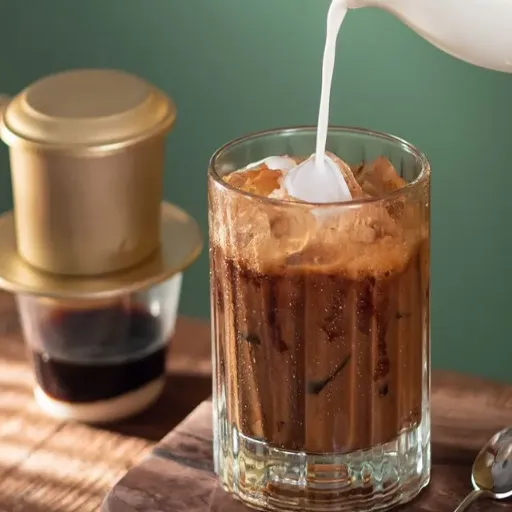
Common Flavors and Additives
Offering a wide range of flavors, Vietnamese drinks are made with different materials, be it fresh or preserved. One of the main components in most of the drinks is the pandan leaf which is appreciated for its fragrant, grassy-sweet taste that is easily carried over to both tea and dessert. Another favorite among the drink-makers is the lemongrass which is known for its uplifting smell and citrus-like taste that is usually associated with the refreshing and invigorating herbal teas promoting digestion and general health.
Natural sweetness and animated flavor are provided to the drinks by a regular addition of tropical fruits like mango, passion fruit, and lychee. These fruits do not only serve the palate but also take their part in supplying the body with antioxidants such as vitamin C which is essential for the immune system. On one hand, the lotus seeds are mixed in for their very light nutty flavor and are considered for their soothing and restorative qualities in herbal medicine.
The drinks of Vietnam also contains spices such as cinnamon and ginger which have a strong presence in the beverage market and are believed to possess anti-inflammatory properties and warming traits. These drinks made with a combination of sweeteners like palm sugar or honey not only offer a complex of flavors but also include health-promoting properties. Coconut milk or cream is mostly added to sweet beverages that are dessert-style, which gives richness to the texture and at the same time, it makes a perfect match with other tropical ingredients. Such a careful choice of flavors and additives is at once a reminder of cultural roots and a demonstration of the great insight about ingredient functionality.
Herbs and Spices in Vietnamese Drinks
The application of herbs and spices in Vietnamese beverages has won them widespread acclaim. They not only bring the herbs and spices into the most delightful flavors but also incorporate the health benefits that are the whole reason for making them. Some top ingredients are pandan leaves, lemongrass, and ginger which are the most common sources for the wonderful smells and therapeutic attributes. For instance, pandan leaves have a very delicate and grassy-like sweetness, and it is mostly through infusion that teas and desserts are given the note while at the same time, they are allowed to work their potential calming effect on the nervous system.
Lemongrass, which is often referred to as a natural remedy for digestive problems and inflammation, is the main herb in Vietnamese drinks that adds a citrusy flavor. It is usually utilized in either herbal tea or syrup for cold drinks. Likewise, ginger uses its flavorsome and slightly hot profile to warm up teas and at the same time, with its active compound gingerol, it helps to relieve nausea and cold symptoms.
Some drink varieties from Vietnam utilize tropical spices, too, such as star anise and cinnamon, to not only add taste but also to introduce functionalities coming from the ancient medicinal practices. For example, cinnamon boosts the metabolism while at the same time enhancing flavor so it is commonly mixed with spices to make tea. When combined with other ingredients such as turmeric or clove, these spices not only create a perfect balance of taste but also share the health-driven functionality.
The intricate use of these herbs and spices in Vietnamese drinks reflects a comprehensive understanding of their chemical properties and their synergistic effects when paired with other ingredients. This approach not only elevates the sensory experience but also aligns with a growing global interest in beverages that promote wellness, demonstrating a seamless blend of traditional and modern beverage crafting techniques.
Local Sourcing of Ingredients
The local sourcing of ingredients has a major role in the sustainability and authenticity of Vietnamese beverages. With the use of herbs, fruits, and spices that are grown locally, the producers not only cut down the carbon emissions caused by transportation but also support the farmers in the area and their economies. This is a very good thing for the environment because it keeps the production fairly fresh and of high quality and also goes with the global trend of being environmentally friendly with production methods. Lemongrass, pandan leaves, and fresh limes are some of the main ingredients that get their origin from the Vietnamese farms which is an indication of the area’s richness in agriculture and its dedication to keeping its indigenous flavors alive.
The different climates of Vietnam make it possible to grow a large number of different crops, like from the south, the tropical fruits, the central regions, the spices, and the highlands, the tea leaves. The beverages industry takes the strategic use of these locally-sourced products to the point where it can even give the consumer a guarantee of the sustainable manner of production in addition to the quality and freshness. For instance, having the ginger and turmeric grown locally not only results in getting rid of the need for imports but also is in line with the demand for natural products with recognized health benefits, like anti-inflammatory and antioxidant properties. This way the industry is able to keep a foot in both camps, the traditional health side and the modern health trend, thus ensuring the continued reputation of Vietnamese beverages as tasty and functional.
On top of that, local sourcing is also a means of keeping the biodiversity and cultural heritage of Vietnam alive. Many of the small farmers still practice the organic farming methods that are centuries old and passed down from one generation to another. The support that is given to these practices assists the heirloom crops and the endemic plant species survive, which might otherwise have their existence endangered by industrial farming. The producers by using these ingredients in their drinks are giving the consumers a direct link with the land and thus are creating products that are not only deeply rooted in the local culture but also have the global sustainability standard to which they are becoming increasingly aligned.
References
- •
Missouri State University – Cafe Sua Da: Southeast Asia Study Away Program Blog
This blog discusses the cultural significance of Vietnamese beverages like Cafe Sua Da, a popular coffee drink. - •
Metropolitan State University of Denver – Culinary Tourism in Vietnam
An exploration of Vietnam’s beverage culture, including its beer-drinking traditions and popular brands like 333 Lager and Bia Hanoi. - •
Duke University – Climate Change’s Impact on Coffee in Vietnam
A report on how climate change affects coffee production in Vietnam, one of the world’s major coffee producers. - •
Click here to read more.
Frequently Asked Questions (FAQ)
Q: What are some famous drinks that you can try when you go to Vietnam?
Vietnam is great for its rich beverage culture so when you get there, make sure to sample the drinks that are offered at the country’s various regions. Some of the most famous drinks are the classic Vietnamese coffee with condensed milk, sugar cane juice, and local draft beer Bia Hoi. Also, Vietnamese herbal tea and fresh fruit drinks like sinh tố are among the daily consumed.
Q: What is it like drinking Vietnamese coffee, and how is it served usually?
The main characteristics of Vietnamese coffee are its potent taste and distinctive brewing procedure. Traditional drip filter brewing is used for it most of the time, and sweetened condensed milk is added as the drink gets ready, forming a thick and sweet beverage. Many prefer it unadulterated, others very cool, especially during the summer months when ice coffee is very popular, and also egg coffee with its milkiness, which otherwise is the most favorite in the Vietnamese cafe scene.
Q: What is Bia Hoi and why is it so loved in Vietnam?
Bia Hoi or fresh beer is a very common Vietnamese beer that is light, refreshing and is normally served as draft in little local places. It is liked by the natives and the tourists both mainly for its price and the friendly mood that surrounds it, because beer is in most cases consumed along with gabbing and Vietnamese food tasting.
Q: In what way does beer culture differ from one place to another in Vietnam?
The beer culture in Vietnam is remarkably different from one region to another. In the north, they drink Bia Hoi a lot while in the center most people consume local drinks. In the south, on the contrary, craft beer is taking over gradually with the likes of Pasteur Street Brewing Company coming up with new and interesting flavors that use local ingredients.
Q: What is the significance of fresh sugar cane juice in the Vietnamese kitchen?
Fresh sugar cane juice is a very nice drink in Vietnam, and especially for its taste and energy giving properties. Most of the time it is served chilled and is found very often at the street stalls where it is sold. In addition to this, the beverage does not only go well with various dishes but also energizes the consumer naturally on hot days.
Q: Are there any herbal teas that are traditional to Vietnam?
Absolutely. Just like the food, herbal teas of Vietnam are an important part of the culture and people consume them a lot. They are made from a variety of herbs and plants, thus they possess health benefits and different tastes. However, the most popular ones are chrysanthemum tea and lotus tea. They can be served both hot and iced.
Q: What kind of substances are mostly found in the drinks of Vietnam?
The most common substances found in the drinks of Vietnam include coffee beans, sweetened condensed milk, fresh fruit, and various herbs. For example, juice of sugarcane is made from fresh sugarcane, while the traditional drinks of coconut water are made using local plants along with Vietnamese herbal tea for the same purpose of flavor and health benefits.
Q: Are there any similarities in the coffee consumption over different countries in comparison with Vietnam?
The uniqueness in the case of Vietnam is mostly from the preparation style along with the use of sweetened condensed milk. In contrary to the situation in many countries where coffee is prepared black or with cream, Vietnamese coffee is usually served sweet and strong. Besides that, the aspect of socialization while drinking coffee inlocal cafes significantly contributes to creating a vibrant coffee culture that that is very characteristic of Vietnam.
Q: What are the cooling drinks that are presented with ice in Vietnam?
A lot of cool drinks are offered over ice in Vietnam, especially in summer. The top three contenders for most refreshing are iced Vietnamese coffee, sugar cane juice, and fresh fruit blended drinks (sinh tố). Besides bringing down the temperature when one drinks them, they also give a taste of the original Vietnamese flavors.
- Iconic Pennsylvania Foods You Must Try: A Gastronomic Journey through the Keystone State
- Why Is Baby Formula So Expensive? Uncovering the Truth Behind Baby Food Prices
- Core Power: The Ultimate High Protein Beverage for Your Workout Recovery
- Profitable Pet Business Ideas: A Lucrative Venture for Animal Lovers






